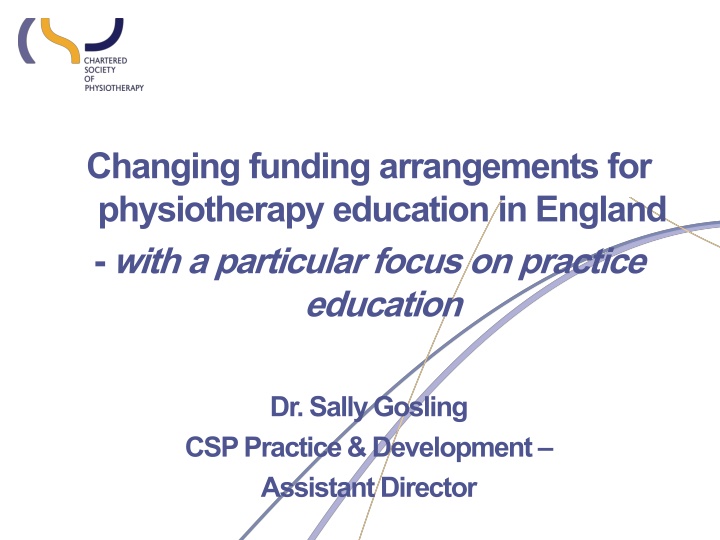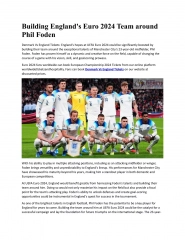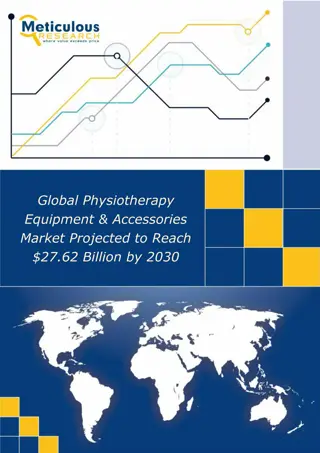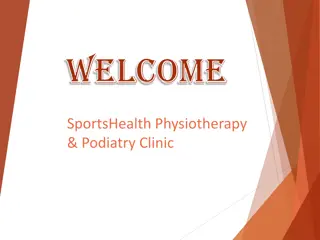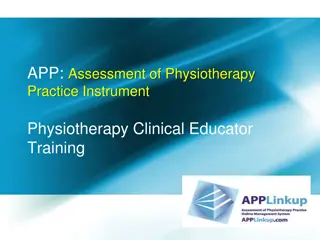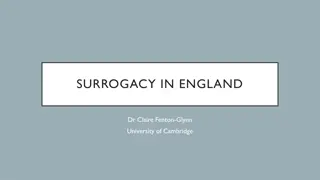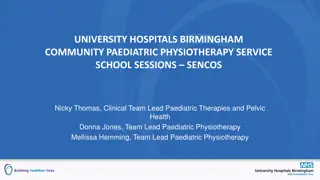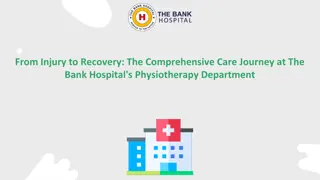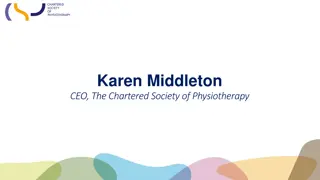Changing Funding Arrangements for Physiotherapy Education in England
Dr. Sally Gosling discusses the shift to a tuition fee/student loan model in physiotherapy education in England, emphasizing the importance of practice-based learning and workforce supply. Key issues, risks, progression updates, and positive elements from the Department of Health consultation response are highlighted.
Download Presentation

Please find below an Image/Link to download the presentation.
The content on the website is provided AS IS for your information and personal use only. It may not be sold, licensed, or shared on other websites without obtaining consent from the author.If you encounter any issues during the download, it is possible that the publisher has removed the file from their server.
You are allowed to download the files provided on this website for personal or commercial use, subject to the condition that they are used lawfully. All files are the property of their respective owners.
The content on the website is provided AS IS for your information and personal use only. It may not be sold, licensed, or shared on other websites without obtaining consent from the author.
E N D
Presentation Transcript
Changing funding arrangements for physiotherapy education in England -with a particular focus on practice education Dr.Sally Gosling CSP Practice & Development Assistant Director
CSP Council-agreed position (Dec.2015) CSP Council recognises the opportunity to grow the physiotherapy profession afforded by the planned shift to the tuition fee/student loan model in England. Through working with others, we are strongly committed to safeguarding the following across the UK: Entry to the profession from all parts of society Supply to the profession to deliver high-quality patient care The quality of education, including practice-based learning as a key part of students learning experience.
Key issues to address and risks to mitigate Current: Workforce commissioning and investment decisions - addressing the shortfalls in physiotherapy workforce supply; optimising physiotherapy s potential as a workforce solution; ensuring security of workforce supply, including during transition Under new arrangements: Student finance/graduate employment arrangements that promote and enable entry to the profession from all parts of society Upholding education quality including practice-based learning capacity to sustain quality and increase workforce supply
Progression since the comprehensive spending review (CSR) DH consultation exercise (April June) First-stage DH response (July) Second-stage DH response (due in the autumn) Allocation of funding to HEFCE to enable transition to new arrangements in 2017/18 Reference to healthcare subjects in guidance to HEIs re. access agreements
What we know now positive elements of the DH consultation response Student support: Recognition of the particular demands of practice education Recognition of the nature of postgraduate pre-reg. programmes Confirmation healthcare students studying for a second undergraduate degree will be eligible for a second student loan Confirmation of interim support for part-time students in 2017/18 Additional financial support for students with dependants Wider issues: Strong emphasis on the importance of monitoring and evaluating the impact of the new arrangements Recognition of the value of achieving consistency in funding arrangements across different professional groups
Less positive/uncertain elements of the consultation response Little focus on achieving/accountability for 10k student increase by 2020 NHS-funded Master s places for 2017/18 to be capped at 2016/17 levels Clarity on arrangements for pre-registration Master s places for 2018/19 due to be in second-stage response in the autumn HEE to be responsible for placement commissioning for 2017/18, but lack of clarity re. how HEE will ensure the minimum number of placements Lack of clarity re. practice education tariff arrangements from 2018/19 Stakeholder events now running in the autumn; clarity due in second-stage response
Outside the scope of the DH consultation and response How HEFCE funding arrangements will work/how funding will be allocated (focus of costing exercise) The potential impact of/interface of funding changes with the apprenticeship agenda Broader systems architecture issues e.g. the impact for physiotherapy education of the teaching excellence framework (TEF) and future research excellence framework exercises (REF) The publication of guidance on 2016/17 practice education tariff arrangements - 2% reduction, but emphasis on funding following students onto placements in any sector/setting
Emergent focuses Ensuring a safe transition 2017/18 as an interim year Engaging with new funding arrangements - costing exercise for programme delivery/consideration of strategic investment funding for healthcare education Taking account of broader context e.g. apprenticeships, university sector developments, institutional strategies/plans, cross-border issues, HCPC standards update, referendum outcome, other country- specific developments Managing uncertainty and optimising opportunities including to safeguard student recruitment, education quality and workforce supply
Entry to the profession Promoting - Up-to-date image - Career development opportunities - To key audiences at key points Engaging with HEI-wide initiatives Widening participation/ Promoting physiotherapy as a career promoting social mobility Understanding the impact/trends relating to tuition fees and emergent risks and issues Fair student finance arrangements Difference modes of entry? Reflecting the costs / patterns of study of physiotherapy students Part-time routes? Fewer postgraduate routes? Degree-level apprenticeships? Added value routes?
Managing education relevance, quality and capacity CSP quality assurance & enhancement role optimising value, currency and Influence Increasing competition Research [REF] Learning & teaching [TEF] Business/strategic plans Positioning within HEIs Changing HEI context Optimising responsiveness to changing need Quality Sufficiency Diversity HEIs Practice education Students Practice education Resourcing New providers/ More providers? Alternative providers? Different types of provision? provision Changing population & patient needs New models of care Changing workforce requirements
Workforce supply Minimising volatility Realistic timelines for applicants/programme providers Ensuring a safe transition Upholding quality, including through regulatory requirements/ CSP expectations Addressing the current shortfall in workforce numbers Changes to programmes, including length? Aligning supply with demand Moderating market forces Pipeline challenges? Apprenticeship agenda
Practice education as a specific focus How can we develop and use CSP messages to 1. Achieve member and organisational engagement in educating future members of the profession/workforce? 2. Support collaboration/enact shared solutions across the membership 3. Ensure practice education is seen and valued as everyone s business?
